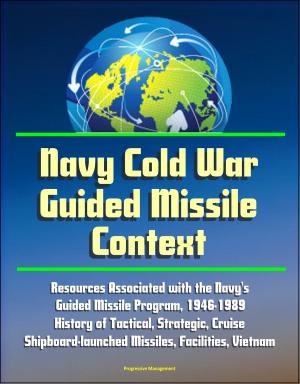21st Century U.S. Military Manuals: Tactics, Techniques, and Procedures for Fire Support for the Combined Arms Commander - FM 3-09.31 (Value-Added Professional Format Series)
Nonfiction, History, Military| Author: | Progressive Management | ISBN: | 9781465845184 |
| Publisher: | Progressive Management | Publication: | September 10, 2011 |
| Imprint: | Smashwords Edition | Language: | English |
| Author: | Progressive Management |
| ISBN: | 9781465845184 |
| Publisher: | Progressive Management |
| Publication: | September 10, 2011 |
| Imprint: | Smashwords Edition |
| Language: | English |
Part of our value-added professional format series, the Tactics, Techniques, and Procedures for Fire Support for the Combined Arms Commander Field Manual (FM 3-09.31) dealing with fire support for the combined arms commander. This FM has been converted for accurate flowing-text e-book format reproduction.
In the preface, it states: "This publication is intended for you, the combined arms brigade or battalion commander, and your staffs to help you synchronize fires with your scheme of maneuver. You know from experience that combat forces must be employed as part of the combined arms team. Maneuver and fires must be synchronized and orchestrated by the combined arms commander to realize the full potential of each arm and maximize the combat power of the combined arms team. The same applies in principle to firepower. Mortars, cannon and rocket artillery, naval gunfire, and air support on the lethal side, and intelligence and electronic warfare (IEW) and information operations (IO) systems on the non-lethal side, are various means of fire support. Each has its own advantages and disadvantages. Each provides a measure of capability the others lack: responsiveness, flexibility, and accuracy from mortars and artillery; precision and destructiveness from close air support; disruption of command and control and capability to exclude collateral damage from IEW and IO systems. Using all of these means in combination creates a synergistic effect - the whole system is far more effective than its parts. The proper application of fire support requires as much skill and orchestration from the combined arms commander as it does from the fire support coordinator (FSCOORD). This is what this publication is about, to help clarify the art of applying fire support at the right time and place on the battlefield."
This manual is produced by Headquarters, US Army Training and Doctrine Command (TRADOC).
As a bonus, this reproduction includes FM-1, The Army Field Manual, a capstone manual containing the vision for the Army - sold separately for $5.99. FM 1 establishes the fundamental principles for employing Landpower. The most important of these are the Army's operational concept and the fundamentals that support it. They form the foundation for all Army doctrine. All Soldiers should understand and internalize them. FM 1 describes the American profession of arms, the Army's place in it, and what it means to be a professional Soldier.
This is a privately authored news service and educational publication of Progressive Management.
Part of our value-added professional format series, the Tactics, Techniques, and Procedures for Fire Support for the Combined Arms Commander Field Manual (FM 3-09.31) dealing with fire support for the combined arms commander. This FM has been converted for accurate flowing-text e-book format reproduction.
In the preface, it states: "This publication is intended for you, the combined arms brigade or battalion commander, and your staffs to help you synchronize fires with your scheme of maneuver. You know from experience that combat forces must be employed as part of the combined arms team. Maneuver and fires must be synchronized and orchestrated by the combined arms commander to realize the full potential of each arm and maximize the combat power of the combined arms team. The same applies in principle to firepower. Mortars, cannon and rocket artillery, naval gunfire, and air support on the lethal side, and intelligence and electronic warfare (IEW) and information operations (IO) systems on the non-lethal side, are various means of fire support. Each has its own advantages and disadvantages. Each provides a measure of capability the others lack: responsiveness, flexibility, and accuracy from mortars and artillery; precision and destructiveness from close air support; disruption of command and control and capability to exclude collateral damage from IEW and IO systems. Using all of these means in combination creates a synergistic effect - the whole system is far more effective than its parts. The proper application of fire support requires as much skill and orchestration from the combined arms commander as it does from the fire support coordinator (FSCOORD). This is what this publication is about, to help clarify the art of applying fire support at the right time and place on the battlefield."
This manual is produced by Headquarters, US Army Training and Doctrine Command (TRADOC).
As a bonus, this reproduction includes FM-1, The Army Field Manual, a capstone manual containing the vision for the Army - sold separately for $5.99. FM 1 establishes the fundamental principles for employing Landpower. The most important of these are the Army's operational concept and the fundamentals that support it. They form the foundation for all Army doctrine. All Soldiers should understand and internalize them. FM 1 describes the American profession of arms, the Army's place in it, and what it means to be a professional Soldier.
This is a privately authored news service and educational publication of Progressive Management.















